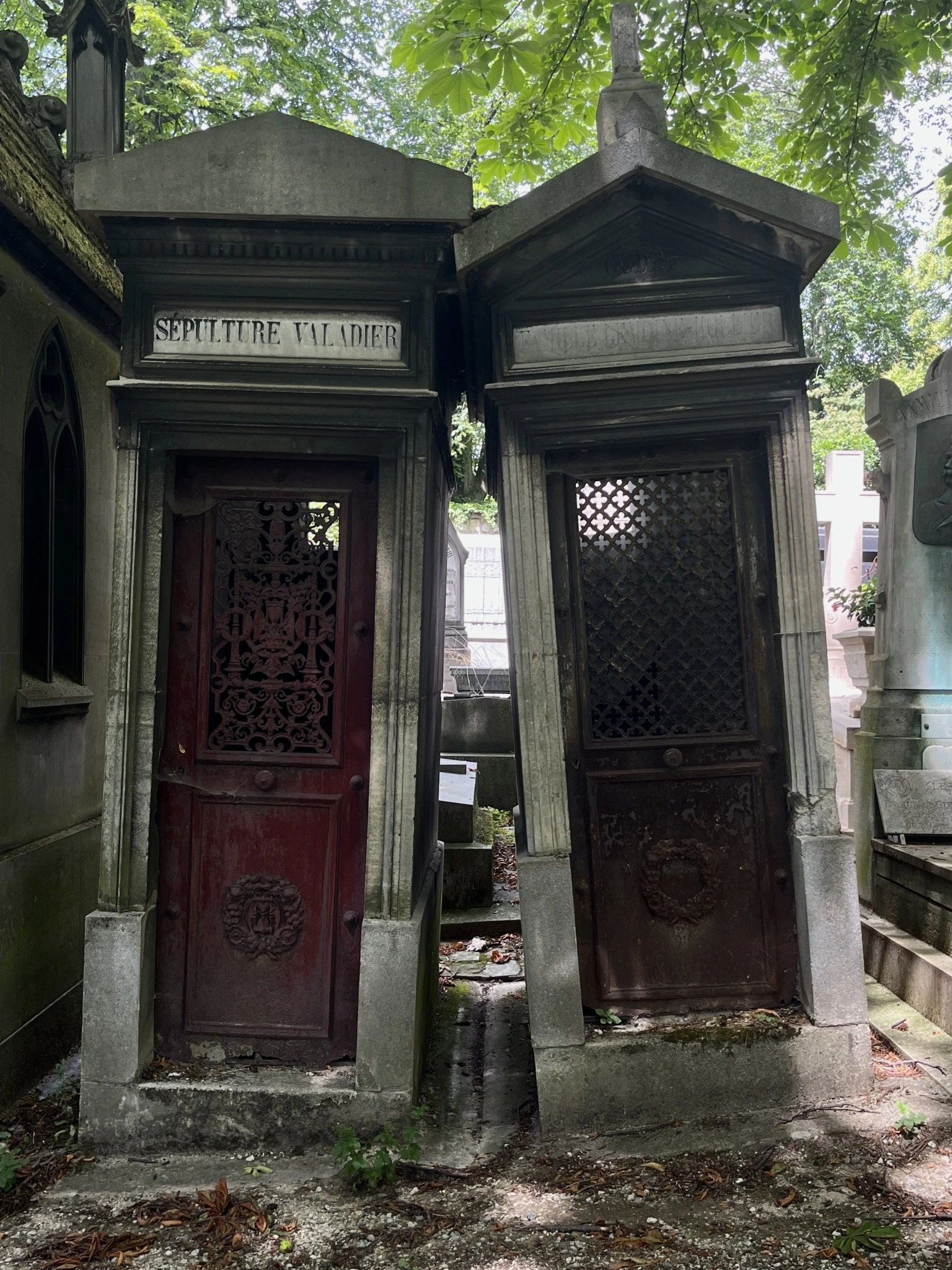
In Going For the Treasure, You Miss the Riches
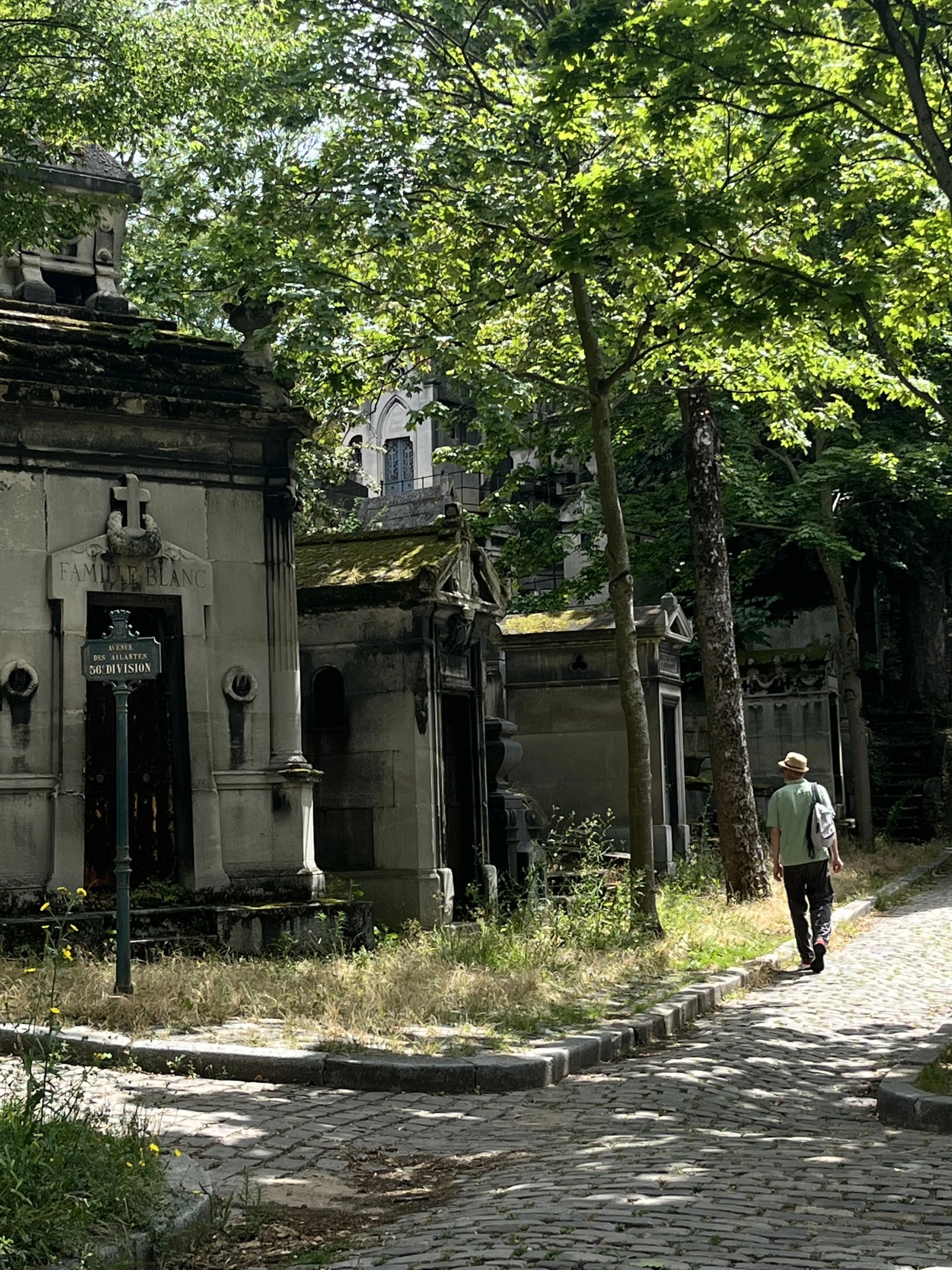
Nestled in the northeast side of the city and atop a hill once known as Champ Evêque, Paris’ Père Lachaise offers up a serene, idyllic stroll through ornate family mausoleums and gravestones intertwined with the ebbs and flows of the natural seasons.
Turn up any of the serpentine, cobble-stone paths and one can revel in this time capsule of a space. Stopping in front of any headstone, each their own, and gazing up at the stones’ intricacies or in through their doors ajar as the sun’s light beaming through the lining trees illuminates the stained glass windows, one cannot help reveling in the beauty of time and change, history and remembrance.
-----------------------------------------------------------------------------------
With Parisian city officials at the end of the 18th century worried for spreading diseases produced by overcrowded cemeteries, Père Lachaise was opened in 1804 by Napoleon Bonaparte on the outskirts of the city.
With Père Lachaise named after Father François de la Chaise, the confessor to King Louis XIV of France (père is father in french), it was when famous peoples’ relocated remains were set to lay in this area, that the cemetery gained traction and made status a defining factor in being buried there.
Now, the 110-acre space is largest in the city, in comparison to the other cemeteries that are positioned around the outskirts of Paris like a compass, with Montmartre Cemetery in the north, Montparnasse Cemetery in the south and Passy Cemetery in the west.
Père Lachaise is home to hundreds of thousands of graves and frequented by more than 3.5 million visitors a year, making it the most visited in the world.
Housing ancient artifacts of time and historically vibrant people of the centuries that came before us, Père Lachaise is also an active cemetery, with ceremonies and burials occurring each year. (Even as I was walking the cobble-stone paths today, I was ushered to the side as a funeral procession passed me by.)
-----------------------------------------------------------------------------------
I spent a fruitful hour inching my way down the paths, taking my time to notice the way one grave’s cobwebs cast an eerie shadow onto the next, or how a tree uprooted two graves and left them slanted, like two lovers connected at the hip lean into one another. I couldn’t help but notice the old and the more recent young ones, the shared final resting spot for both celebrities and community members alike.


On my stroll, I also could not help but notice the hoards of tourists (I know, I myself am included in that grouping “tourists”), walking through the grounds with their heads down, scanning their maps in search of the tombs of history’s ‘noteworthy’ celebrities– Jim Morrison, Oscar Wilde, Edith Piaf, etc.
Don’t get me wrong, I find beauty in honoring those who have made a large, impactful footprint on the world’s culture, literature and music industry. Though above that, I find beauty in the ability to idolize the mundane and the overlooked, in those similar ways. As Rick Rubin writes in his book The Creative Act: A Way of Being, “Look for what you notice but no one else sees.”
In meandering through the thousands of graves with a purpose of nothing other than easeful awareness, I find that I got more out of the experience than one who runs straight to Morrison’s grave, snaps a photo and calls it done, as in their eyes, seeing him was what constituted a day well spent in Père Lachaise.
And upon seeing Morrison, the area littered with flowers, empty alcohol bottles and picture frames, and barricaded with a metal fence to stop the hoards of crazed fans from chipping pieces off his grave, my mind and gaze alike wandered quickly to the neighboring tomb of Mme. Gambier– an unknown figure to me, though one worth noticing and appreciating.
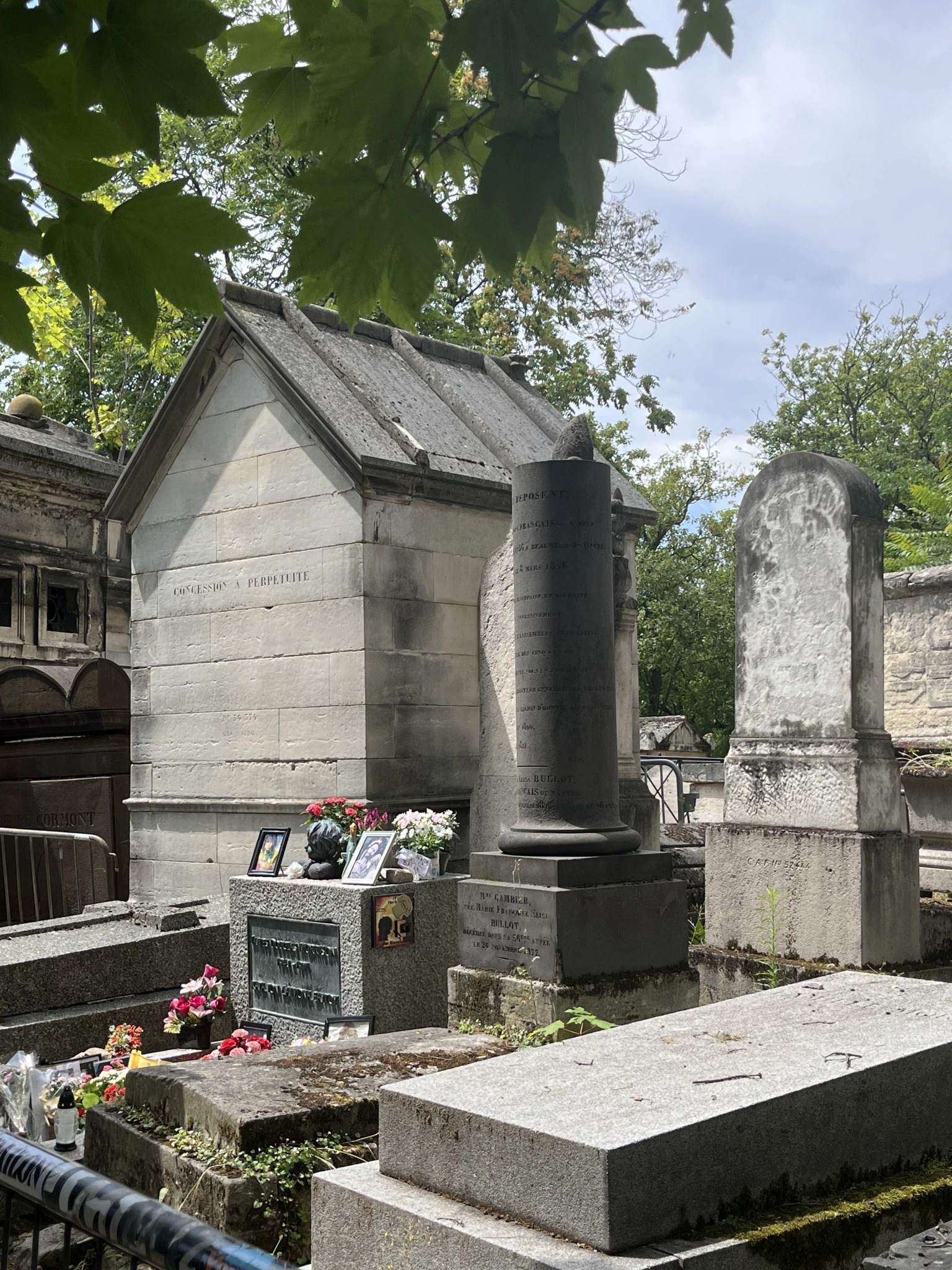
On November 24, 1871, Gambier was buried– 100 years prior to Morrison’s death in 1971.
As columnist Colm O’Regan writes in the Irish Examiner upon visiting Morrison’s grave, Gambier’s tomb, following the years since her rowdy neighbor brought floods of fans to the surrounding area, has been stepped on, scribbled on and even knocked over by people attempting to get a closer look at what lays beside her.
“History is full of next-tos,” O’Regan says. However, he stresses “there’s nothing less meritorious about any of these next-tos. It’s just that subsequent or adjacent events have eclipsed them.”
While O’Regan found very little information connected with Mme. Gambier in his research, other than the fact she had a husband and daughter, her lesser-known stature, as he emphasizes, does not make her deserving of less compassion or appreciation.
And as I stood with my body up against the barricade littered with stickers, next to an innocent tree littered with gum pieces, I couldn’t help but wonder what life she led, the people she loved and the people that loved her. And I couldn’t help but feel a little sympathy for her idyllic plot of land, that over the past century has evolved from something of a garden of Eden to what feels like the Times Square of the cemetery.
I wonder how many visitors fail to notice her grave, inches from the inscription that reads “James Douglas Morrison.”
-------------------------------------------------------------------------------
But in no ways am I trashing on Jim.
I am more urging the awareness and appreciation for the more inconspicuous beauty neighboring him.
I must not forget to mention that even I, upon arriving at Père Lachaise, coined the cemetery as “the Jim Morrison cemetery” in my mind, as his grave was all I had ever heard mentioned in regards to the area.
But maybe we can take this small reflection as a telling sign that we as humans often tend to gravitate toward the masses. Traveling to lock eyes with the Eiffel Tower but not with the vibrant and intelligent Parisian inhabitants sprinkled around hidden boulangeries in the crevices of town. Flooding into the cemetery gates to honor and commemorate Jim Morrison while not offering Mme. Gambier, an overlooked spectacle who has fallen through the gaps of time, the same attention or decency.
But maybe my words and recollections of my day can expand one’s view of the place. For what lays beyond these few monuments of highly-acclaimed people is buried treasure all around, if only we open our eyes to see it.
-------------------------------------------------------------------------------
Stained glass peaking through…
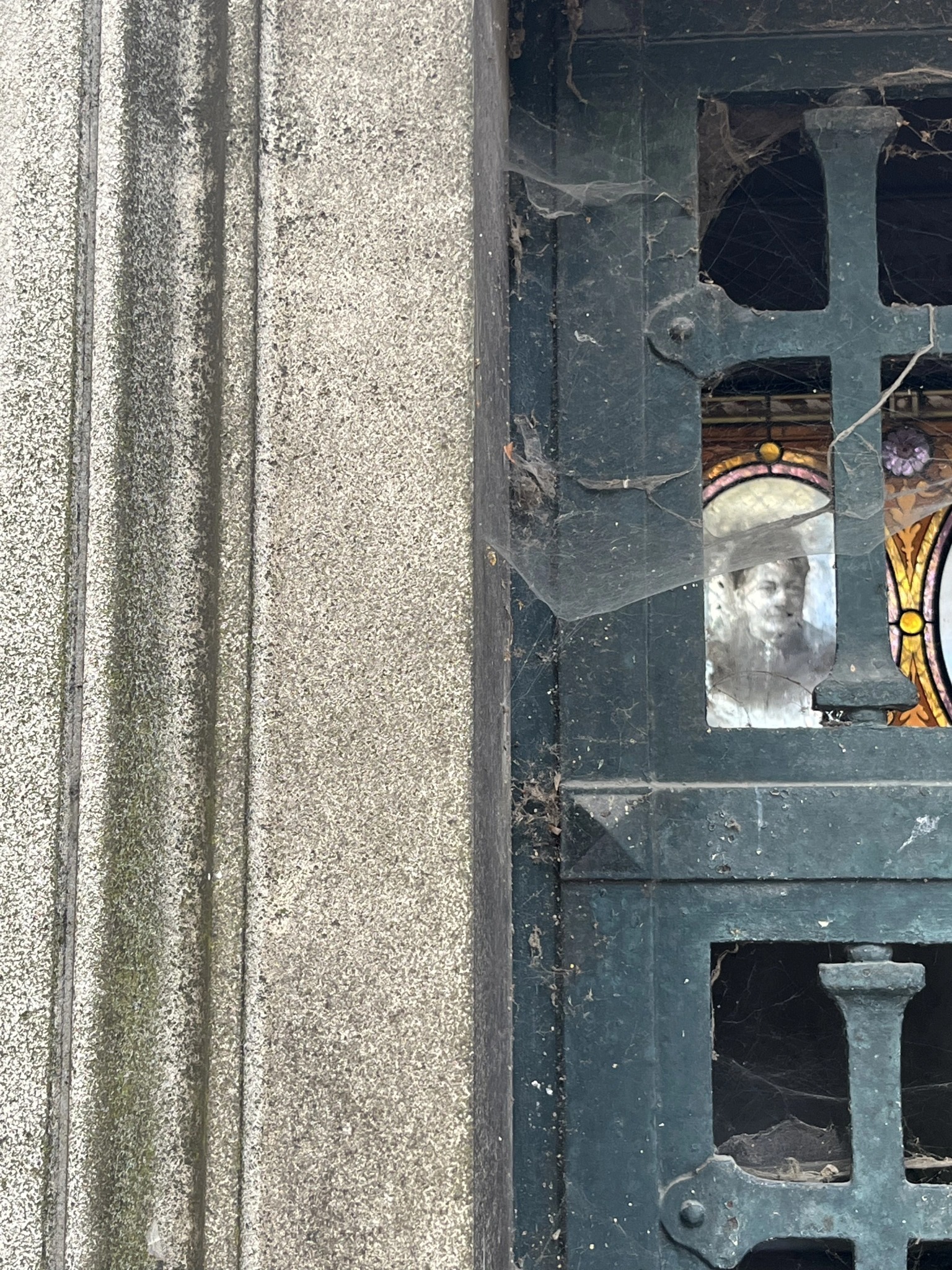
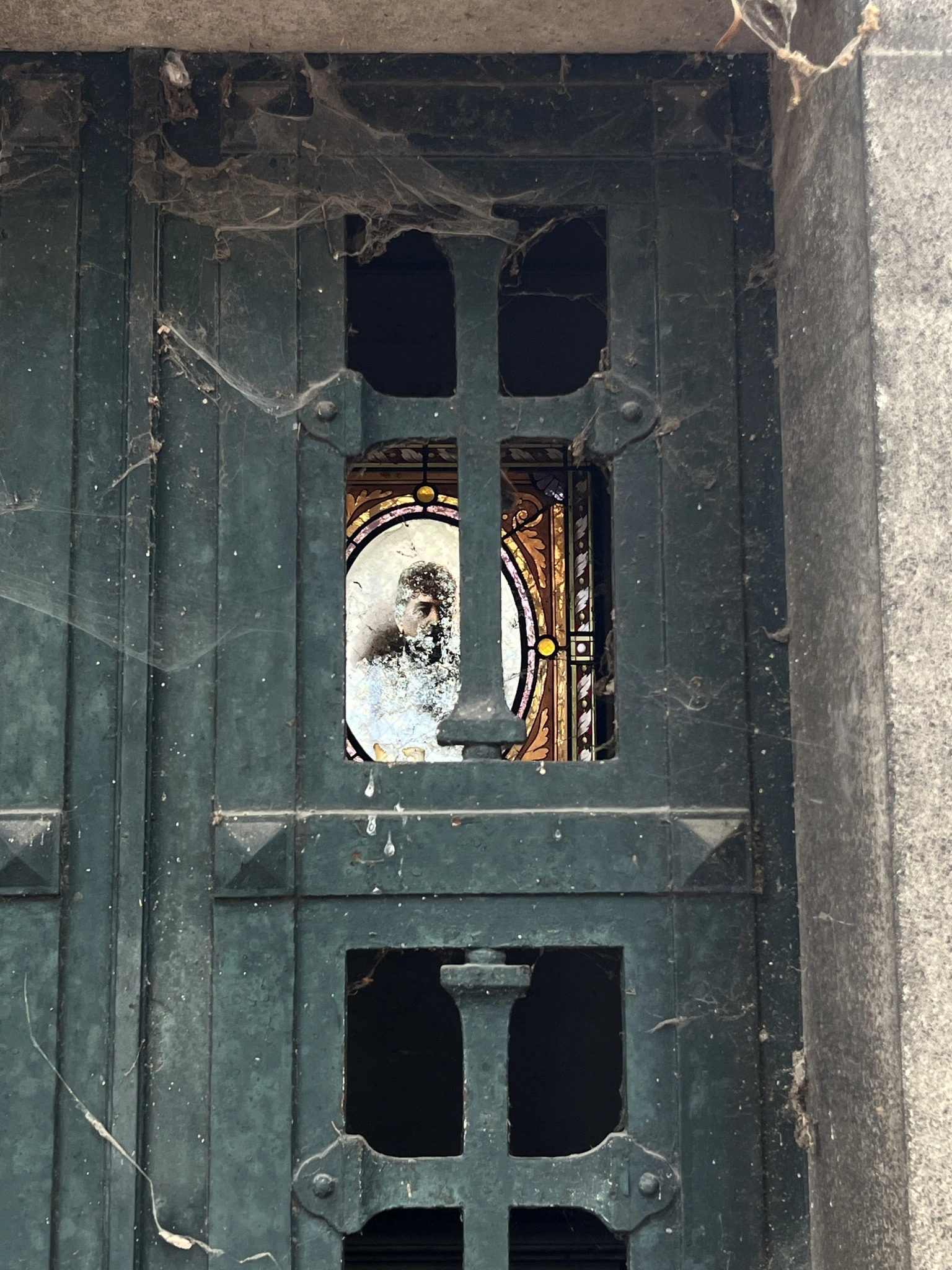
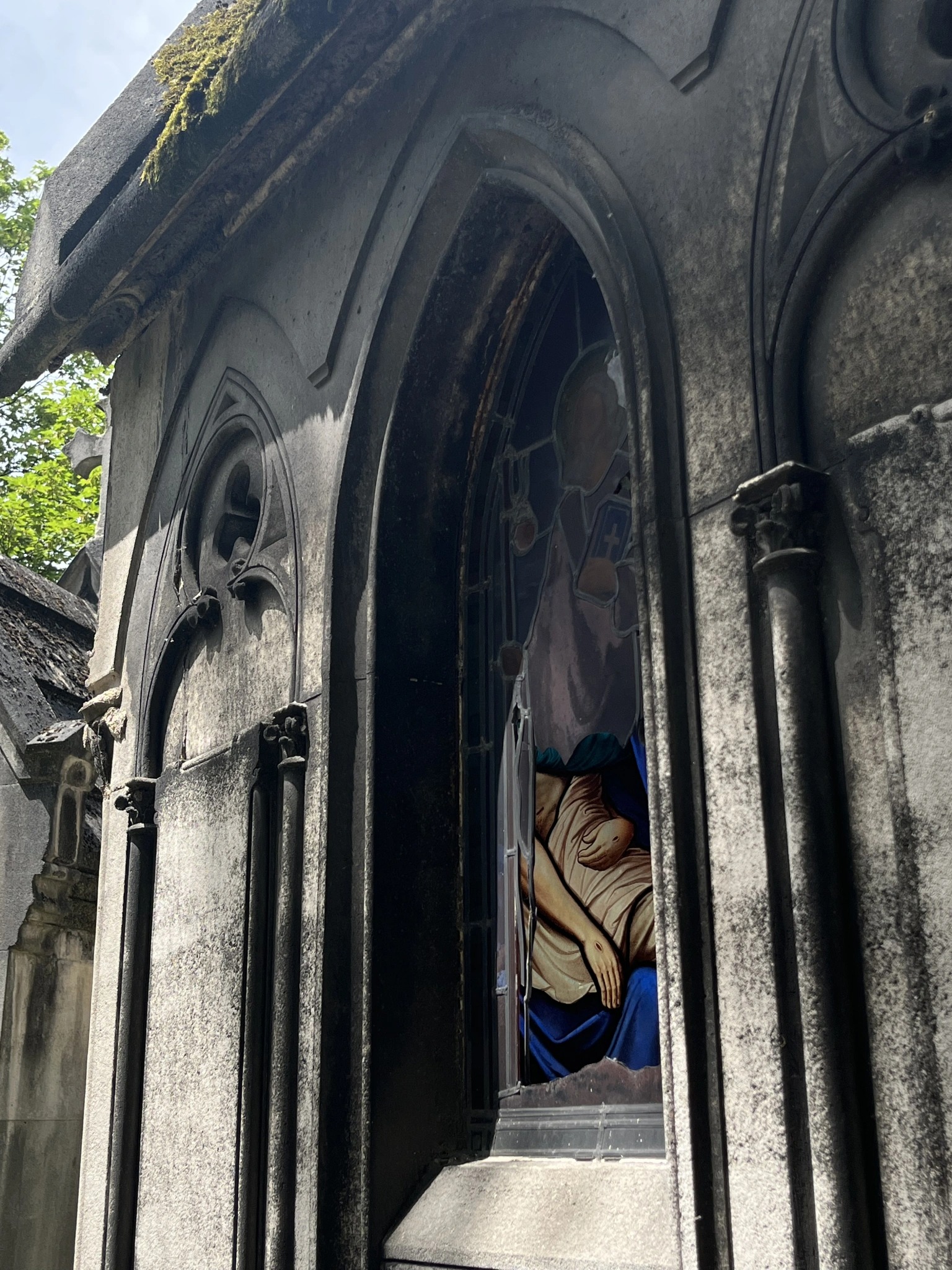

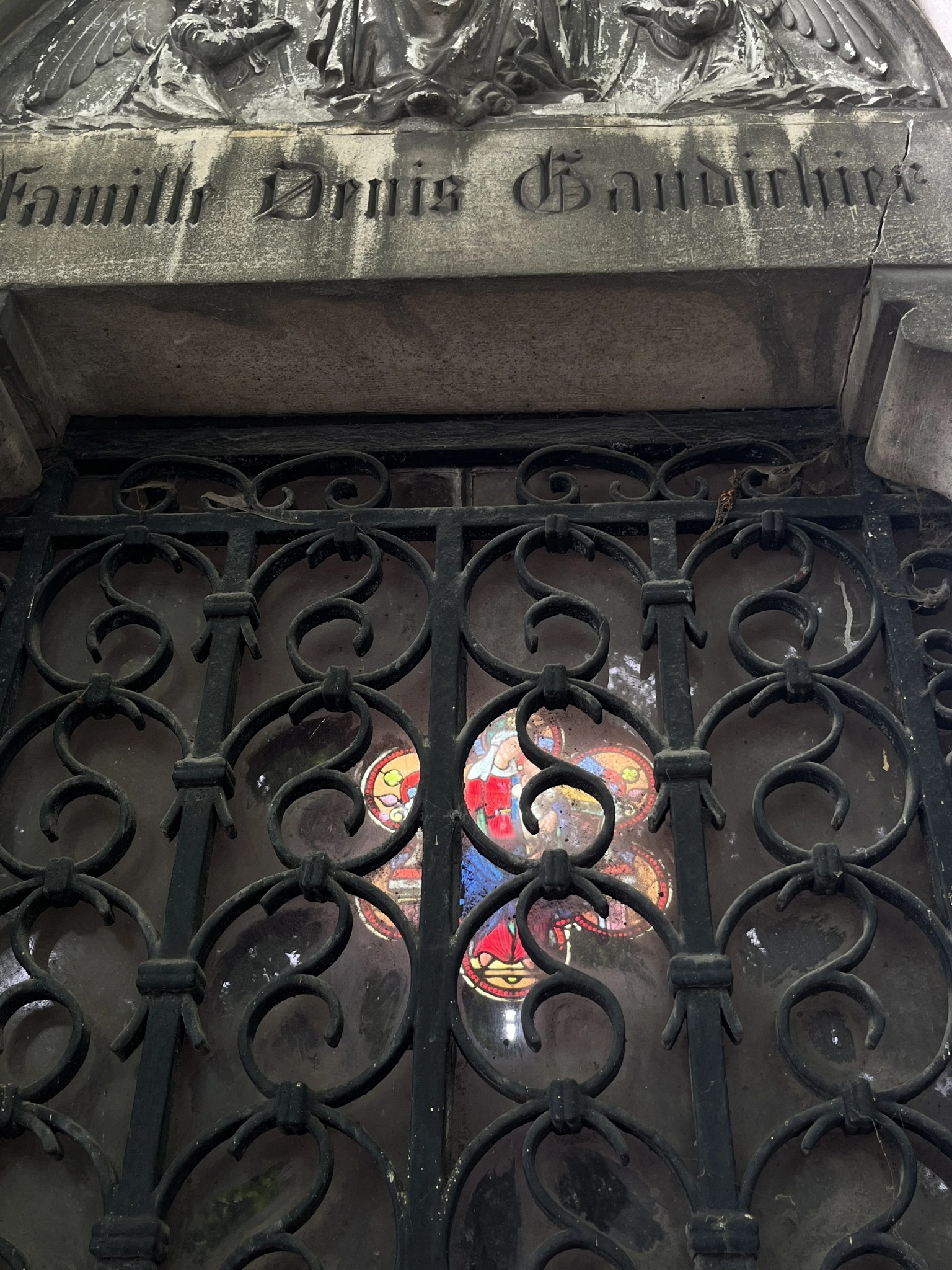
Beauty takes many forms, as these angels engulfed in years of dirt and dust so effortlessly reveal…
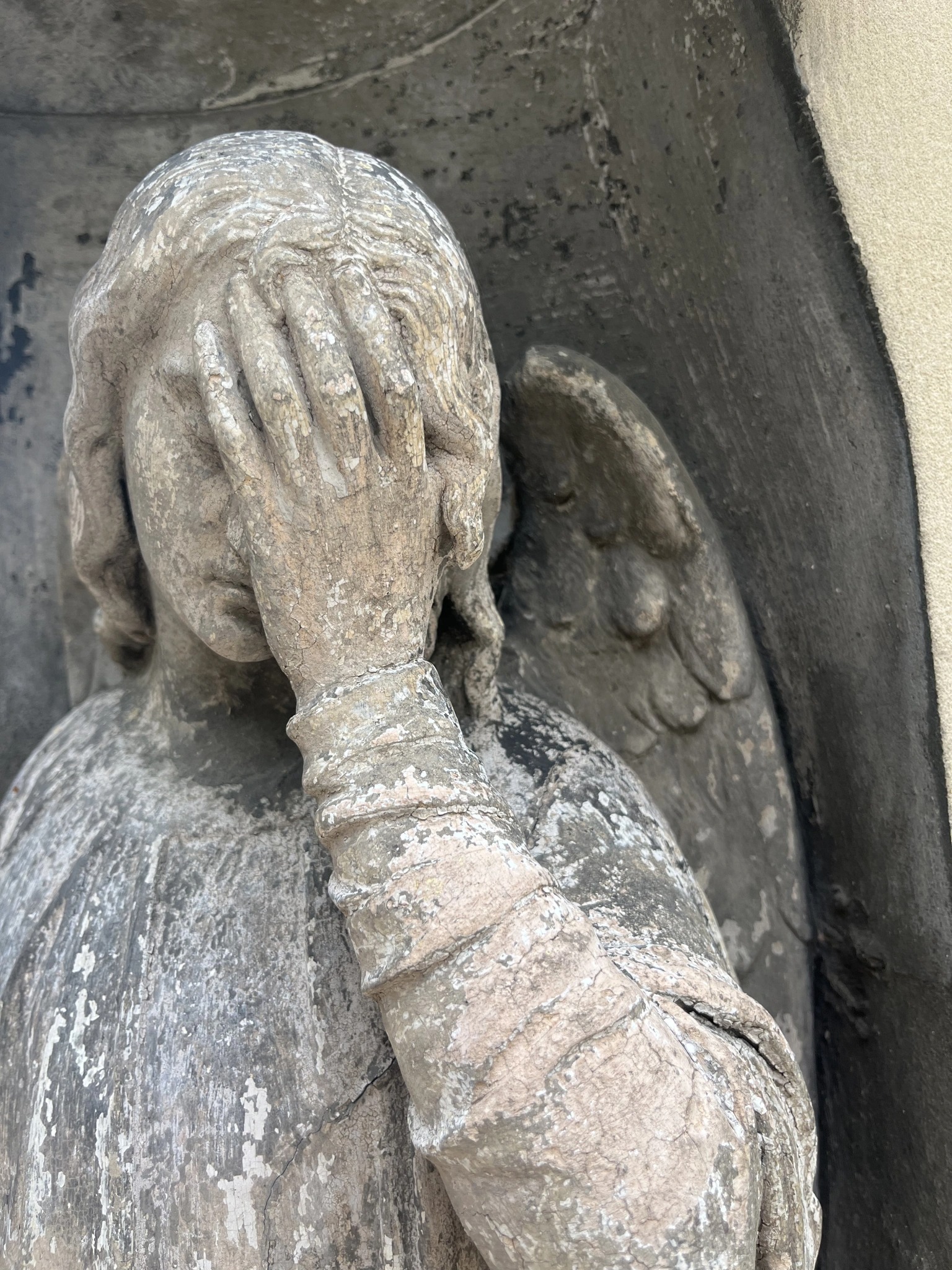
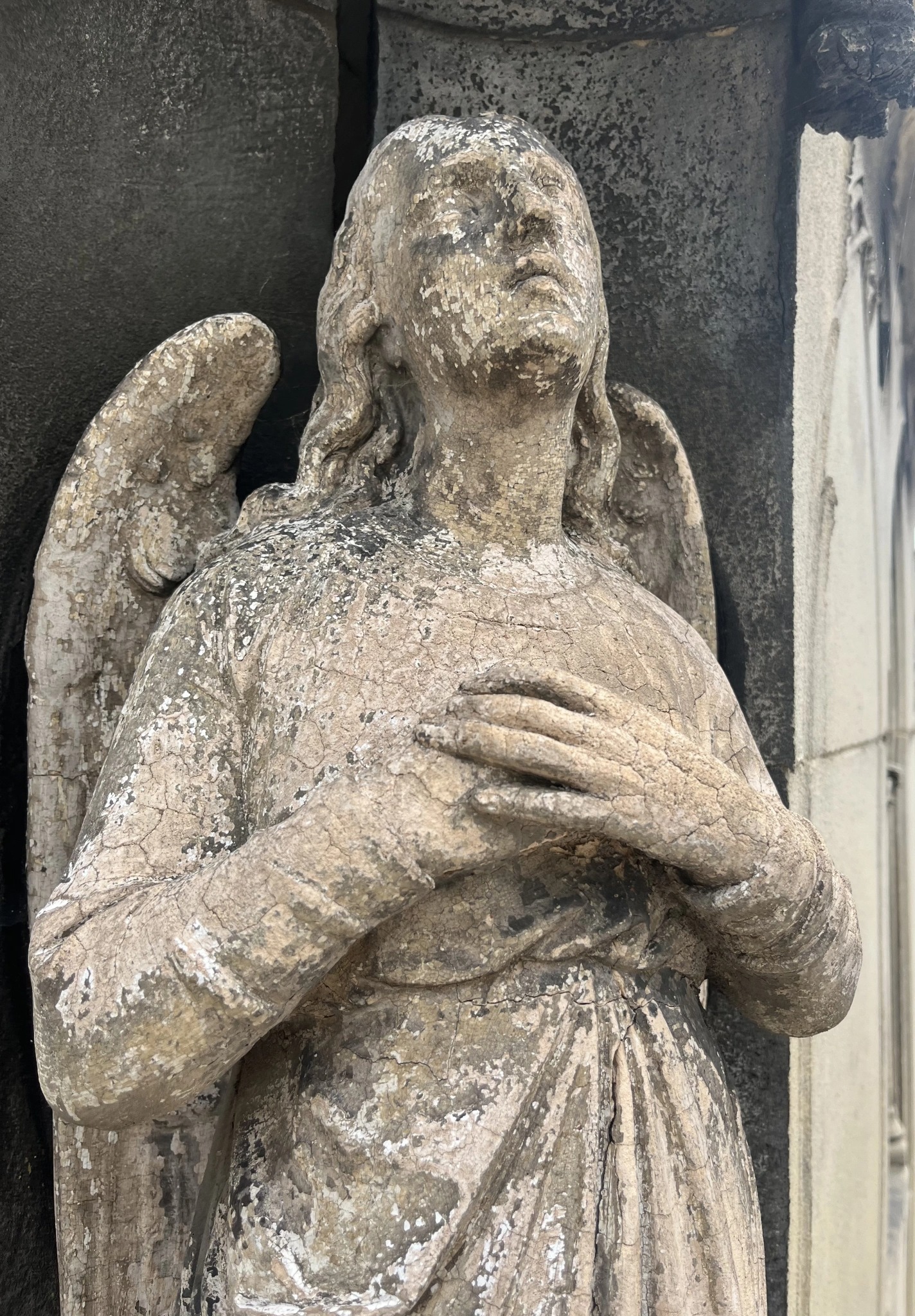
Post a comment